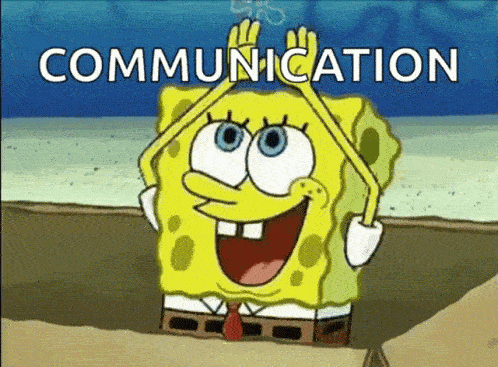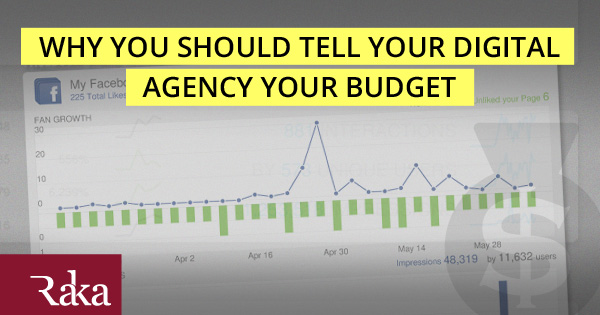Like you, we get excited about new things. New iPhones, new computers, new office supplies. Maybe that last one is just us.
Anyways, while new devices are great, we get just as excited about working with our clients to build new, eye-catching websites to be viewed on said devices. We’ve been doing it since 2004, and in that time we’ve seen design tastes and functionalities change over and over again. The one thing that has stayed the same? The questions:
- How much does it cost to build a new website?
- How can my website stay ahead of changes in design and usability?
And today’s topic:
- How long will it take to build my website?
How long does it take to build a website?
The answer to all of the questions above is, unfortunately, the same: it depends. While cost and timeline are often very closely related, there are dozens of factors that will affect the total length of the project, including (but not limited to) design needs, defined functionality, client feedback, agency resources, and more.
The best way for us to talk about a website timeline is to talk from our experience, so here we’ll discuss our process, a general timeline, and some of the above factors that can force that timeline to change. Before we discuss the timeline at large, let’s talk about some of those factors.
Communication and cooperation are necessary
It’s tough to predict where website projects might encounter hurdles, so at Raka, we plan for smooth sailing but prepare for choppy seas (we live near the ocean, forgive the analogy). It’s our prerogative to make sure that everyone involved in the project is on the same page, not just before we start a project, but also as the project moves along. Clear, consistent, and transparent communication (including a firm understanding of important terms) between the agency and the client can greatly reduce drag time between phases, and will ultimately benefit the finished product.

What are my responsibilities as a client?
Client responsibilities will vary depending upon the nature and scope of the project. Typical Raka website projects often include things like style guides, website copy, photography, and even video work, saving clients from having to manage those projects themselves. Adding those items to a project also opens up lots of opportunity for additional discussion about brand and company goals, which are always beneficial for our strategy team (more on that in a minute).
Whether we’re working with a larger marketing department that has a strong understanding of their current website’s performance and well-defined goals for user experience and functionality of a new site, or the lead on a small (or even non-existent) marketing team that leans more heavily on Raka to lead the project, there are a few things that we ask of all of our clients:
- Brand assets – logo, corporate colors, typography, etc.
- Marketing goals
- Audience information
- HELP
That last one goes back to the point about communication. Working with an agency means that you are most likely the subject matter expert, while we are the digital marketing, design, and development experts. We’ll have questions for you, just as you’ll have questions for us. By working collaboratively, and helping each other out, we can ensure the end product is a leading example in both your industry and ours.
What are Raka’s responsibilities as an agency?
Raka’s website projects aren’t typical website projects. Sure, any agency would say that, but what differentiates our website projects from more typical builds is that we focus on the long-term success of your brand. How we do that depends upon the particulars of a project, but we start each website project by creating a comprehensive marketing strategy that includes, among other things:
- Competitive analysis
- Audit of client-owned digital assets (Website, Email marketing, Social media accounts, Customer databases, or HubSpot)
- Advertising recommendations
- SEO recommendations
- Suggested marketing tactics specific to your brand
- Example marketing campaigns
Other, a la carte items that some projects also incorporate include:
- On-site photography
- Branded animations
- Video marketing support
- Copywriting
- Style guide creation
- Brand consultation
Since you’re curious about timeline, yes, the above items can add some time to a website project, but it’s our belief that thoroughness is second to none when it comes to building a successful website that projects future growth. And of course, the a la carte items can be completed following launch, if desired.
Okay, enough background. Let’s talk about the process.
The process
^Catchy heading, isn’t it? Now that you’re hooked, let’s outline Raka’s website process. While we’re always evolving our website projects, our basic marketing website project is a 57-step process that incorporates client feedback at every turn, meshing our strategic, design, and technical expertise with your brand and industry insights to create a website that everyone will love.
Before the process even begins, however, we review goals and needs during the proposal process to determine whether we’re looking at building a traditional website or something more involved (think: ecommerce, client portals, highly sophisticated UIs). Once we’ve come to an agreement and all parties have a solid understanding of the project goals, we get into the process, which has five main phases.
Phase 1: Strategy (6-10 weeks)
Kickoff, Discovery and Strategy are all parts of our strategy phase, which focuses primarily on the latter of the three:
During the kickoff portion of the project, we work with clients to establish a timeline for their project, confirm the project expectations and introduce the day-to-day contacts from both sides to one another. Following this meeting, we deliver a firm timeline and discovery questionnaire, upon receipt of which we’ll schedule a discovery meeting, which is often an in-person working session. During that session we review goals and get a better understanding of the needs of both our client and their audience.
Upon completion of the discovery meeting, we start looking into our client’s current digital footprint and incorporate everything we have learned into the strategy document, which is the ultimate deliverable of this phase of the project. When completed, Raka’s inbound marketing strategy will include elements of the following:
- Current site benchmarks
- Competitive audit
- Keyword research and SEO recommendations
- Advertising recommendations
- Buyer persona definitions
- Social media success tactics
- Content planning
- New site technical recommendations
Common obstacles that affect timeline: Improper/missing client analytics or advertising data; lack of client agreement on buyer personas; misunderstanding of how technical recommendations will impact site design and functionality
Phase 2: Architecture (2-4 weeks)
You wouldn’t build a new house without laying the framework, and that’s exactly what we do during the architecture phase of the site, which consists of two main deliverables: a site architecture map and wireframes.
The architecture is fundamentally an outline of pages on the site, intended to show how the hierarchy of top- and sub-level pages fit together. The wireframes are a more visual layout of how on-page content will fit together, built for the purpose of showcasing weights and balances. Wireframes aren’t intended to indicate how final designs will lay out, but rather to showcase how things could look once our design team takes their magic wand to them.
Common obstacles that affect timeline: misunderstanding of purpose of wireframes; lack of client transparency surrounding which pages should be included in the site architecture
Phase 3: Design (4-6 weeks)
Following our receipt of sign-off on the wireframes and architecture, we move into the design phase of the site. This phase also consists of two main deliverables: the homepage designs and the subpage designs (referring to top navigational pages that are not the homepage). It takes us about two weeks to design each, and a couple of weeks of client dialog are typical to this phase as well.
Once designs are signed off on, we move the project into development, but without all site copy and creative assets in hand at this time, we risk significant delays and scope extensions, causing frustration across the board, so we typically do not move from design to development without all assets in hand.
Common obstacles that affect timeline: delays in client feedback; incomplete assets; a preponderance of minor changes
Phase 4: Development (6-10 weeks)
At long last, we build a website! The development phase is at once the lowest-touch and the most intense phase of the entire project, as our programmers will spend weeks with their heads down building a site, followed by a frenzied period when assets are updated, edits are implemented and technical resources are pulled in to ensure a successful, on-time launch.
The length of the development period depends largely upon the nature of the site; smaller, “brochure” sites can often be built in less than a month, while more complicated systems (think ecommerce) can take three or four times as long (or longer) to complete.
Common obstacles that affect timeline: delays in client feedback; late change requests; implementation issues
Phase 5: Support (ongoing)
At Raka, we have a lot of faith in our website project system, but we also know that your marketing doesn’t stop when a site launches, and neither do we. As important as it is to build a great site, it’s even more important to keep refreshing it to keep it looking shiny and new (after all, nobody’s clamoring for an iPhone 5 anymore). We do that by writing and refreshing search-optimized copy, swapping out images frequently (at least seasonally), re-skinning designs, making adjustments based upon user experience data, and implementing targeted campaigns to reach new users and drive old ones back to your site, all with the goal of helping your brand to build stronger client/customer relationships and growing your audience.





